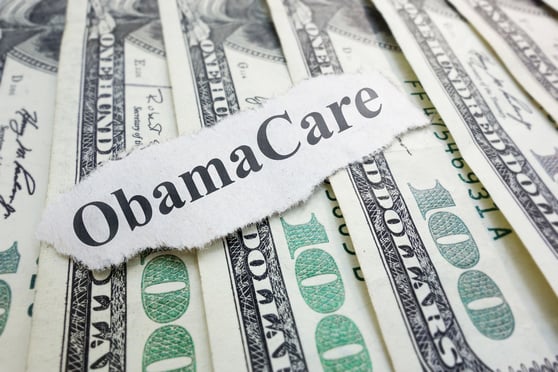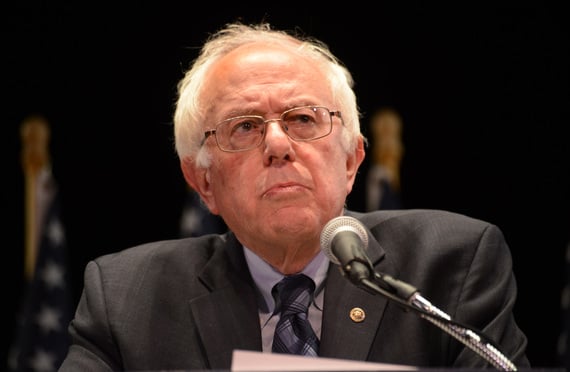Motivation. It's a strange and multi-layered concept that mostof us use on a regular basis in conversation about how human beingsinteract with the world around us.
|How motivated do I feel today? What motivated someone to do thisor that? How can I motivate someone to behave in a particularfashion?
|Straightforward application of motivation concepts seems to besurrounding us in common settings. Yet it wouldn't be hard to arguethat finding what actually motivates us is infinitely morechallenging—and intriguing at the same time.
|In the health care benefits space, the movement toward aconsumer-centric environment emerged from the concept that we had anew opportunity to apply our understanding of motivation to healthcare purchasing behavior. A problem presented itself so plainlythat we immediately applied our common sense understanding ofmotivation.
|That same problem continues to be the target of value-basedbenefit design solutions today, manifested in a variety ofinteresting and complex incentive programs.
|PROBLEM: Benefit participants who don't havematerial wallet share are not motivated to make “good” purchasingdecisions with their health care dollars.
|It seemed evident during the early days of consumer-drivenhealth care that the solution was related to finding the right kindof financial motivation to help people more consistently pursuewhat we would define as “good” decisions when allocating financialresources to health care products or services.
|Give someone a wallet and fill it with benefit dollars they cancontrol, and they'll be inclined to spend them more effectively(i.e. get more bang for their buck). You could call thisConsumerism 1.0.
|In Consumerism 1.0, we also saw the emergence of a variety ofsimplified assumptions around how people would behave once theyapplied their “natural consumer” persona to the health carearena. Assumptions included:
- People would naturally apply the same type of cost/qualitytrade-off calculations to health care decisions that they use inother retail settings.
- Wallet share is always visible, and therefore has the abilityto impact purchasing decisions.
- “Benefit dollars” (or real money for that matter) are theultimate trump card currency for motivating behavior change.
On the surface, these assumptions seemed fair and reasonable.But as stated earlier, motivation's a tricky thing and doesn'talways allow itself to be easily understood or calculated informulaic fashion.
|Consumerism applied to the health care purchasing environmentturned out to have some not-so-expected results. Case in point: Astudy published by the Journal of the American Medical Associationfound a new consumer perspective within the often analyzed placeboeffect.
|In this study, researchers asked a group of participants toendure a series of electric shocks. Participants ranked their painlevel after the initial test. Before administering a second set ofshocks with exactly the same level of electricity, the participantswere separated into two groups and each given what they were toldwere painkiller prescription drugs (but were actually sugar-pillplacebos with no measurable effect on pain). Group A was told theirmedicine cost 10 cents per pill and Group B was told theirpainkillers were $2.50 per pill—25 times the cost.
|Can you guess the outcome?
|At its very core, the results of this study challenged theoriginal assumptions around Consumerism 1.0. Only 65 percent ofGroup A reported their pain level was reduced by taking theplacebo, while a full 85 percent of Group B reported reduced painlevels.
|It's just a single study, but telling nonetheless. It seemed asthough we may have our own deeply ingrained assumptions about costand quality as they relate to health care.
|Mainly, that higher cost usually has a proportional relationshipto higher quality—and as consumers, we may not have the propensityto make cost/quality tradeoffs like we do elsewhere. Someone maynot be OK with a lower quality knee replacement that doesn't allowfull mobility or clicks when he walks, just because he got a greatdeal on it.
|This is new insight into how value may be derived as we all makehealth care purchasing decisions.
|The other two core assumptions may also have some challengesthat need to be addressed if we accept this first version ofconsumerism is the best destination.
|First, assuming wallet share (or cost) is always visible andeasily understood is just plain dangerous from a benefit strategyperspective. Numerous studies have shown that—on average—we spendless than 60 minutes annually reviewing the employer-sponsoredhealth plan options offered to us.
|Plans are complex and summary plan descriptions feel more likeILPDs (Incredibly Lengthy Plan Descriptions) to most of us.Absorbing all of the “what if” scenarios and understanding how theymay or may not generate member responsibility or out-of-pocketfinancial exposure for members and their household budgets is adaunting task to say the least.
|Additionally, assuming participants do get a rudimentary, yetfunctional grasp on their benefit structure, finding accurate,reliable and easily accessible cost and quality information iswaiting as the next challenge around the corner.
|The pricing infrastructure our industry has assembled createsthe possibility that the same services and treatments in the samegeographies could have a wide variation in expected and actualcost.
|Using a cost treatment estimate tool from a nationally respectedsource of medical information, I was able to look up the expectedcost for treating a heart attack in Manhattan. The expectedout-of-network cost varied by 926 percent from the bottom to thetop of the range. A very tough setting for driving consistentconsumerism behaviors, even if the benefit structure isunderstood.
So what now?
The picture is not as bleak as it may seem after wading throughthese conclusions on Consumerism 1.0. As in any strategy, iterativedevelopment based on learning from the first try createsopportunity for new outcomes.
|As professionals in this industry, the opportunities thatcurrently exist for us to help employers (plan sponsors) to betterunderstand motivation have the potential to be game changers.
|As Consumerism 2.0 has evolved, incentives (anddis-incentives) have blossomed as key motivational tactics deployedin an attempt to shape consumer behavior. It seems almost out ofplace to talk about sponsoring a biometric screening event,clinical health risk assessment or chronic condition coachingprogram without mentioning the use of appropriate incentives todrive participation.
|Daniel Pink, in his book Drive: The Surprising Truth AboutWhat Motivates Us, talks about the current perception aroundincentives/penalties within the context of benefitstrategy:
|Rewarding an activity will get you more of it. Punishing an activity will get you less of it.
|On its surface, this seems to be a logical assumption that hasmade its way into so many of our strategies that are intended tosupport consumerism. We have bought wholesale into the idea thatdriving higher participation levels in consumeristic health andcare management programs will logically drive better healthoutcomes.
|Initially, there's all sorts of evidence that behaviors dochange when financial incentives are attached.
|People seem to pursue activities that help them accrue points,dollars or other currencies that they can use to offset their costson health care expenses. Participants consistently seem hesitant toleave dollars on the table when they are available as incentiverewards for walking challenges, “know your numbers” educationalcampaigns and disease management participation.
|But, are they truly motivated in a sustainable way by theintermediate reward of lower cost? The next stage of consumerism inhealth care may be at the epicenter of that question.
|Are we truly motivated by cost avoidance only as a singularincentive?
|Is there a more direct driver that has the potential horsepowerto create long-term changes to our behavior that put us on a betterhealth trajectory?
|Are we on the precipice of (re)discovering a more basic, naturalmotivator: the intrinsic value of experiencing consistently betterhealth status?
|In an employment setting, when considering compensationstrategies, some believe using financial rewards as a primarymotivator is not sufficient and the best use of money as a primarymotivation tool is to pay people enough to let employees focuselsewhere.
|Perhaps that is the next frontier of consumerism in healthcare?
|As trusted advisers on benefit strategies, it's incumbent uponus all to have this context in mind when working with our employerclients. Effective VBBD strategies can then be driven through:
- Creating shared understanding of an employer's specificpopulation and where it currently sits on a consumercontinuum.
- Breaking down any misdirected perceptions of cost in currentbenefit structures.
- Finding a way to calculate how much financial reward is enoughto take cost (as the only concern) off the table, allowing membersto focus on deeper motivations.
- Defining and integrating a sense of value into our programsthat speaks directly to how consistently better health status hastrue, universal reward.
Laying this foundation can help create a whole new perspectiveon motivation and the opportunity to create shared strategies foremployers/plan sponsors that tap into a more direct driver ofbehavior.
|Unleashing the power behind the intrinsic value of better healthmay be the pivot point for Consumerism 3.0 and beyond.
Complete your profile to continue reading and get FREE access to BenefitsPRO, part of your ALM digital membership.
Your access to unlimited BenefitsPRO content isn’t changing.
Once you are an ALM digital member, you’ll receive:
- Critical BenefitsPRO information including cutting edge post-reform success strategies, access to educational webcasts and videos, resources from industry leaders, and informative Newsletters.
- Exclusive discounts on ALM, BenefitsPRO magazine and BenefitsPRO.com events
- Access to other award-winning ALM websites including ThinkAdvisor.com and Law.com
Already have an account? Sign In
© 2024 ALM Global, LLC, All Rights Reserved. Request academic re-use from www.copyright.com. All other uses, submit a request to [email protected]. For more information visit Asset & Logo Licensing.








